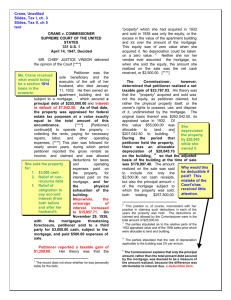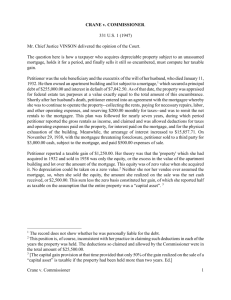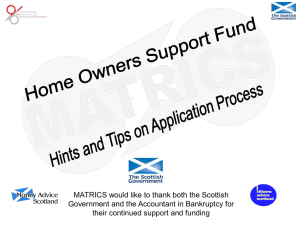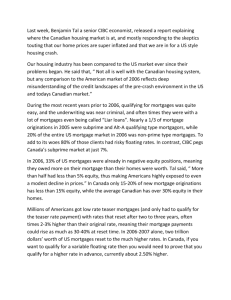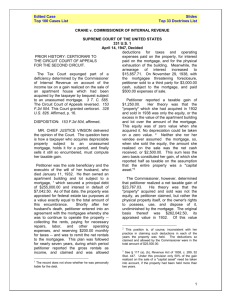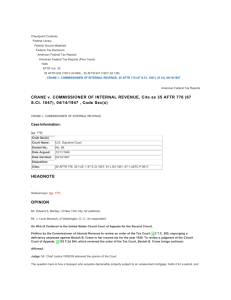Crane v. Commissioner, 331 U.S. 1
advertisement
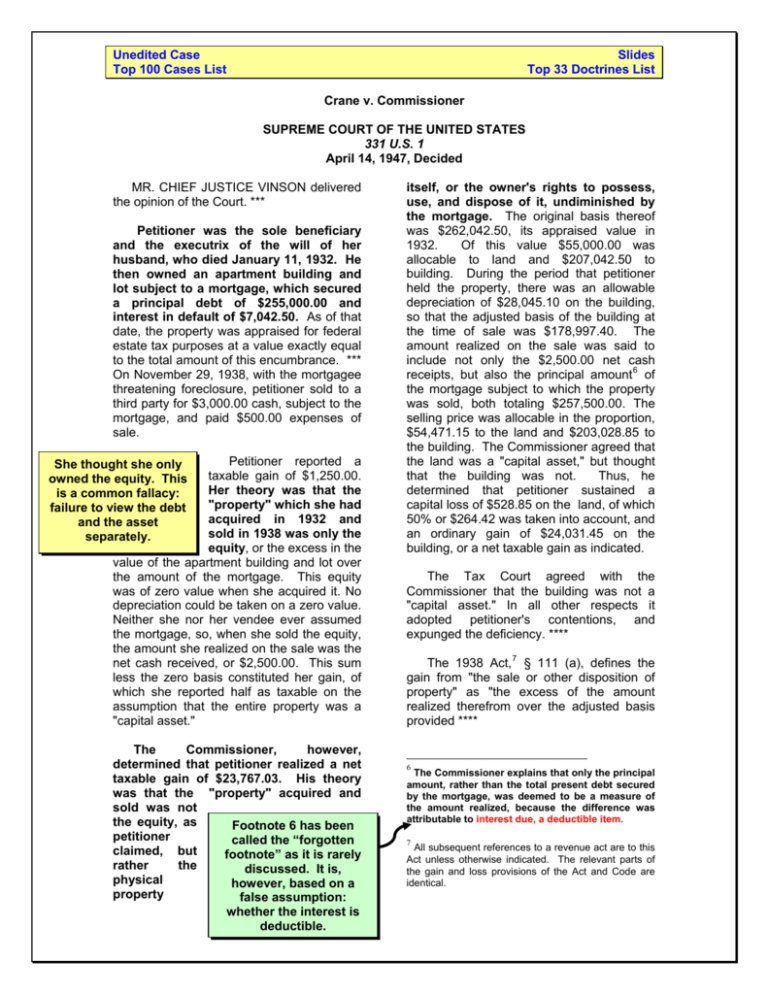
Unedited Case Top 100 Cases List Slides Top 33 Doctrines List Crane v. Commissioner SUPREME COURT OF THE UNITED STATES 331 U.S. 1 April 14, 1947, Decided MR. CHIEF JUSTICE VINSON delivered the opinion of the Court. *** Petitioner was the sole beneficiary and the executrix of the will of her husband, who died January 11, 1932. He then owned an apartment building and lot subject to a mortgage, which secured a principal debt of $255,000.00 and interest in default of $7,042.50. As of that date, the property was appraised for federal estate tax purposes at a value exactly equal to the total amount of this encumbrance. *** On November 29, 1938, with the mortgagee threatening foreclosure, petitioner sold to a third party for $3,000.00 cash, subject to the mortgage, and paid $500.00 expenses of sale. Petitioner reported a taxable gain of $1,250.00. Her theory was that the "property" which she had acquired in 1932 and sold in 1938 was only the equity, or the excess in the value of the apartment building and lot over the amount of the mortgage. This equity was of zero value when she acquired it. No depreciation could be taken on a zero value. Neither she nor her vendee ever assumed the mortgage, so, when she sold the equity, the amount she realized on the sale was the net cash received, or $2,500.00. This sum less the zero basis constituted her gain, of which she reported half as taxable on the assumption that the entire property was a "capital asset." She thought she only owned the equity. This is a common fallacy: failure to view the debt and the asset separately. The Commissioner, however, determined that petitioner realized a net taxable gain of $23,767.03. His theory was that the "property" acquired and sold was not the equity, as Footnote 6 has been petitioner called the “forgotten claimed, but footnote” as it is rarely rather the discussed. It is, physical however, based on a property false assumption: whether the interest is deductible. itself, or the owner's rights to possess, use, and dispose of it, undiminished by the mortgage. The original basis thereof was $262,042.50, its appraised value in 1932. Of this value $55,000.00 was allocable to land and $207,042.50 to building. During the period that petitioner held the property, there was an allowable depreciation of $28,045.10 on the building, so that the adjusted basis of the building at the time of sale was $178,997.40. The amount realized on the sale was said to include not only the $2,500.00 net cash 6 receipts, but also the principal amount of the mortgage subject to which the property was sold, both totaling $257,500.00. The selling price was allocable in the proportion, $54,471.15 to the land and $203,028.85 to the building. The Commissioner agreed that the land was a "capital asset," but thought that the building was not. Thus, he determined that petitioner sustained a capital loss of $528.85 on the land, of which 50% or $264.42 was taken into account, and an ordinary gain of $24,031.45 on the building, or a net taxable gain as indicated. The Tax Court agreed with the Commissioner that the building was not a "capital asset." In all other respects it adopted petitioner's contentions, and expunged the deficiency. **** The 1938 Act, 7 § 111 (a), defines the gain from "the sale or other disposition of property" as "the excess of the amount realized therefrom over the adjusted basis provided **** 6 The Commissioner explains that only the principal amount, rather than the total present debt secured by the mortgage, was deemed to be a measure of the amount realized, because the difference was attributable to interest due, a deductible item. 7 All subsequent references to a revenue act are to this Act unless otherwise indicated. The relevant parts of the gain and loss provisions of the Act and Code are identical. Unedited Case Top 100 Cases List Logically, the first step under this scheme is to determine the unadjusted basis of the property, under § 113 (a) (5), and the dispute in this case is as to the construction to be given the term "property." If "property," as used in that provision, means the same thing as "equity," it would necessarily follow that the basis of petitioner's property was zero, as she contends. If, on the contrary, it means the land and building themselves, or the owner's legal rights in them, undiminished by the mortgage, the basis was $262,042.50. We think that the reasons for favoring one of the latter constructions are of overwhelming weight. In the first place, the words of statutes -- including revenue acts -should be interpreted where possible in their ordinary, everyday senses. The only relevant definitions of "property" to be found in the principal standard dictionaries are the two favored by the Commissioner, i. e., either that "property" is the physical thing which is a subject of ownership, or that it is the aggregate of the owner's rights to control and dispose of that thing. "Equity" is not given as a synonym, nor do either of the foregoing Equity is not a definitions suggest that it synonym for property could be correctly so used. or asset. Indeed, "equity" is defined as "the value of a property . . . above the total of the liens. . . ." The contradistinction could hardly be more pointed. Strong countervailing considerations would be required to support a contention that Congress, in using the word "property," meant "equity," or that we should impute to it the intent to convey that meaning. **** Slides Top 33 Doctrines List they will represent only a fraction of the cost of the corresponding physical exhaustion, and any recoupment by the mortgagor of the remainder of that cost can be effected only by the reduction of his taxable gain in the year of sale. If, however, the amount of the annual allowances were to be computed on the value of the property, and then deducted from an equity basis, we would in some instances have to accept deductions from a minus basis or deny deductions altogether. Payment of a debt has The Commissioner nothing to do with the also argues that basis of the property taking the secured by the debt. mortgagor's equity as the § 113 (a) basis would require the basis to be changed with each payment on the mortgage, and that the attendant problem of repeatedly recomputing basis and annual allowances would be a tremendous accounting burden on both the Commissioner and the taxpayer. Moreover, the mortgagor would acquire control over the timing of his depreciation allowances. **** We conclude that the proper basis under § 113 (a) (5) is the value of the property, undiminished by mortgages thereon, and that the correct basis here was $262,042.50. **** A further reason why the word "property" in § 113 (a) should not be construed to mean "equity" is the bearing such construction would have on the allowance of deductions for depreciation and on the collateral adjustments of basis. **** At last we come to the problem of determining the "amount realized" on the 1938 sale. Section 111 (b), it will be recalled, defines the "amount realized" from "the sale . . . of property" as "the sum of any money received plus the fair market value of the property (other than money) received," and § 111 (a) defines the gain on "the sale . . . of property" as the excess of the amount realized over the basis. **** If the "property" to be valued on the date of acquisition is the property free of liens, the "property" to be priced on a subsequent sale must be the same thing. Under these provisions, if the mortgagor's equity were the § 113 (a) basis, it would also be the original basis from which depreciation allowances are deducted. If it is, and if the amount of the annual allowances were to be computed on that value, as would then seem to be required, Starting from this point, we could not accept petitioner's contention that the $2,500.00 net cash was all she realized on the sale except on the absurdity that she sold a quarter-of-a-million dollar property for roughly one per cent of its value, and took a 99 percent loss. Actually, petitioner does Unedited Case Top 100 Cases List not urge this. She argues, conversely, that because only $2,500.00 was Relief of a liability realized on the sale, the or even a non"property" sold must have been the equity only, and that recourse liability to consequently we are forced to which transferred accept her contention as to the property is subject meaning of "property" ***. We constitutes an adhere, however, to what we amount realized. have already said on the meaning of "property," and we find that the absurdity is avoided by our conclusion that the amount of the mortgage is properly included in the "amount realized" on the sale. Petitioner concedes that if she had been personally liable on the mortgage and the purchaser had either paid or assumed it, the amount so paid or assumed would be considered a part of the "amount realized" ****. The cases so deciding have already repudiated the notion that there must be an actual receipt by the seller himself of "money" or "other property," in their narrowest senses. It was thought to be decisive that one section of the Act must be construed so as not to defeat the intention of another or to frustrate the Act as a whole, and that the taxpayer was the "beneficiary" of the payment in "as real and substantial [a sense] as if the money had been paid it and then paid over by it to its creditors. Slides Top 33 Doctrines List subject to the mortgage -- it may make a difference to the purchaser and to the mortgagee, but not to the mortgagor. Or put in another way, we are no more concerned with whether the mortgagor is, strictly speaking, a debtor on the mortgage, than we are with whether the benefit to him is, strictly speaking, a receipt Because of the of money or property. We “incentive to pay” the are rather concerned debt has reality. Tufts with the reality that an expands the rule way owner of property, beyond this notion. mortgaged at a figure less than that at which the property will sell, must and will treat the conditions of the mortgage exactly as if they were his personal obligations. If he transfers subject to the mortgage, the benefit to him is as real and substantial as if the mortgage were discharged, or as if a personal debt in an equal amount had been assumed by another. Therefore we conclude that the Commissioner was right in determining that petitioner realized $257,500.00 on the sale of this property. **** Affirmed. This may be the most momentous statement in the history of U.S. tax law. It effectively recognizes debt as a real investment in property for basis purposes and amount realized. [W]e think that a mortgagor, not personally liable on the debt, who sells the property subject to the A taxpayer has amount mortgage and for additional realized even if he is consideration, realizes a relieved of paying nonbenefit in the amount of the recourse debt – that for mortgage as well as the boot.138 If a purchaser pays which he is not liable boot, it is immaterial as to our personally. problem whether the mortgagor is also to receive money from the purchaser to discharge the mortgage prior to sale, or whether he is merely to transfer This footnote is the most famous footnote in U.S. 138 tax history. Many a law Obviously, if the value of the property is less than the amount of the mortgage, a mortgagor who review article has been is not personally liable cannot realize a benefit written about Crane equal to the mortgage. Consequently, a different footnote 13. problem might be encountered where a mortgagor abandoned the property or transferred it subject to the mortgage without receiving boot. That is not this case. The 1981 Tufts decision answers the question asked in footnote 13.


